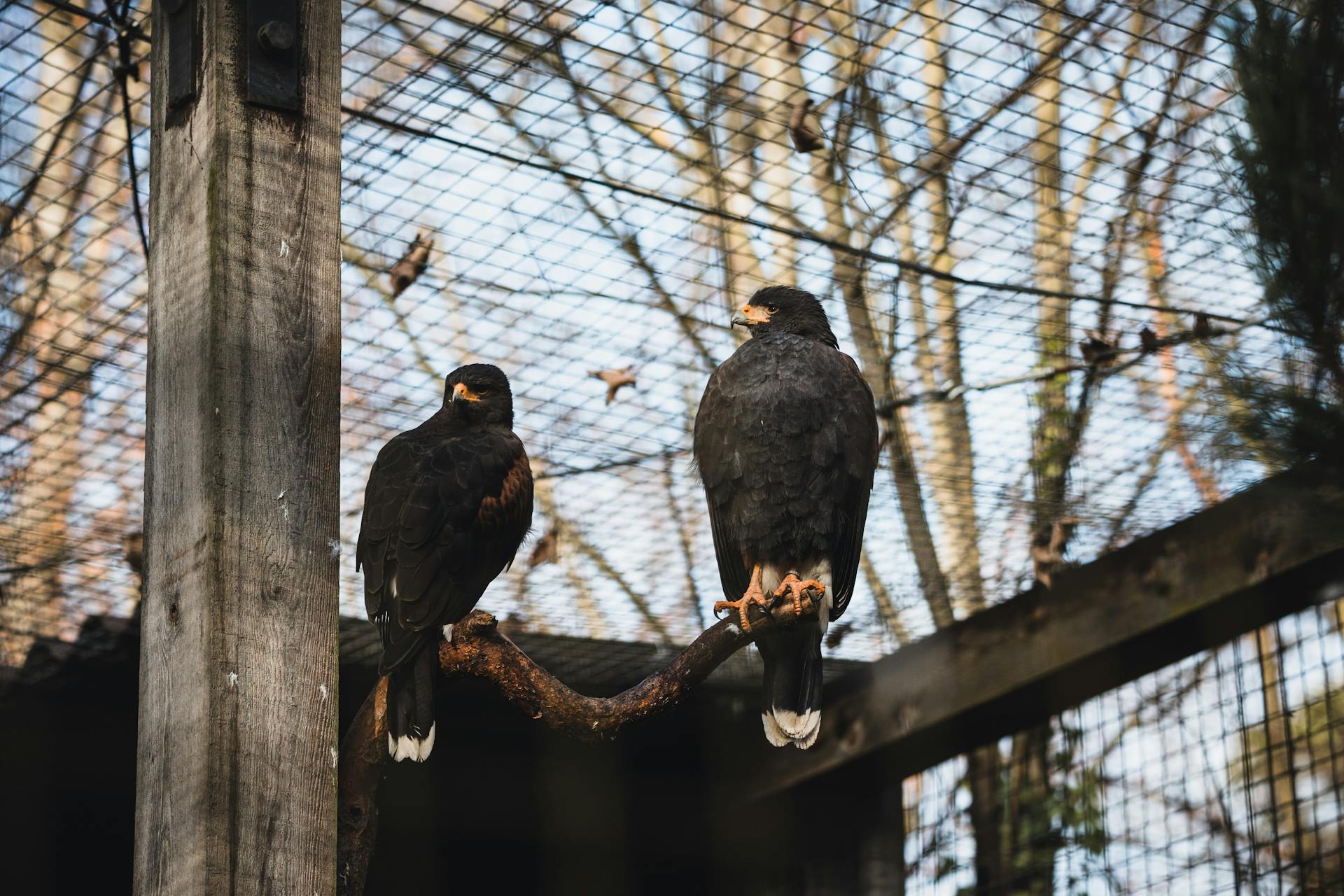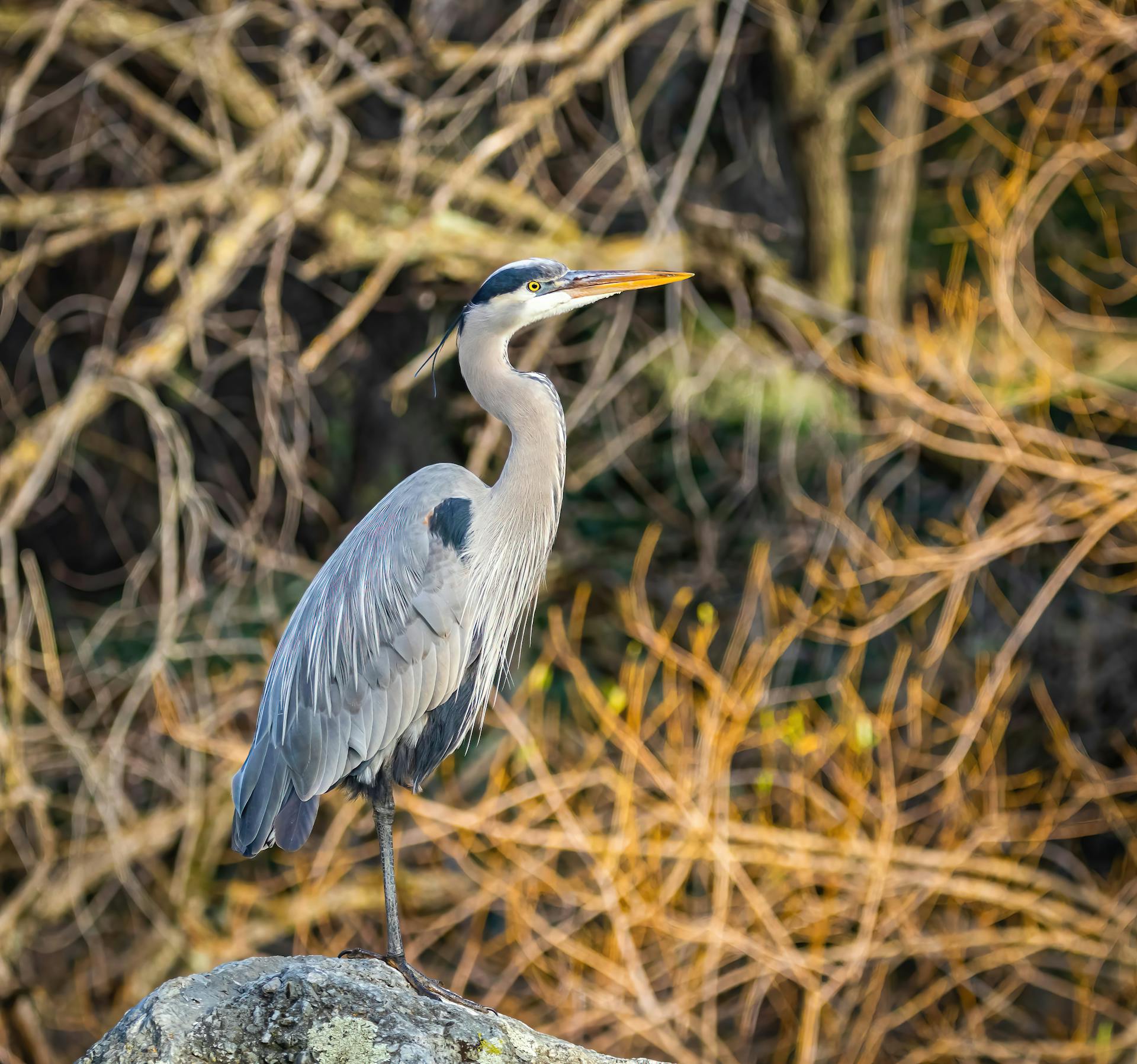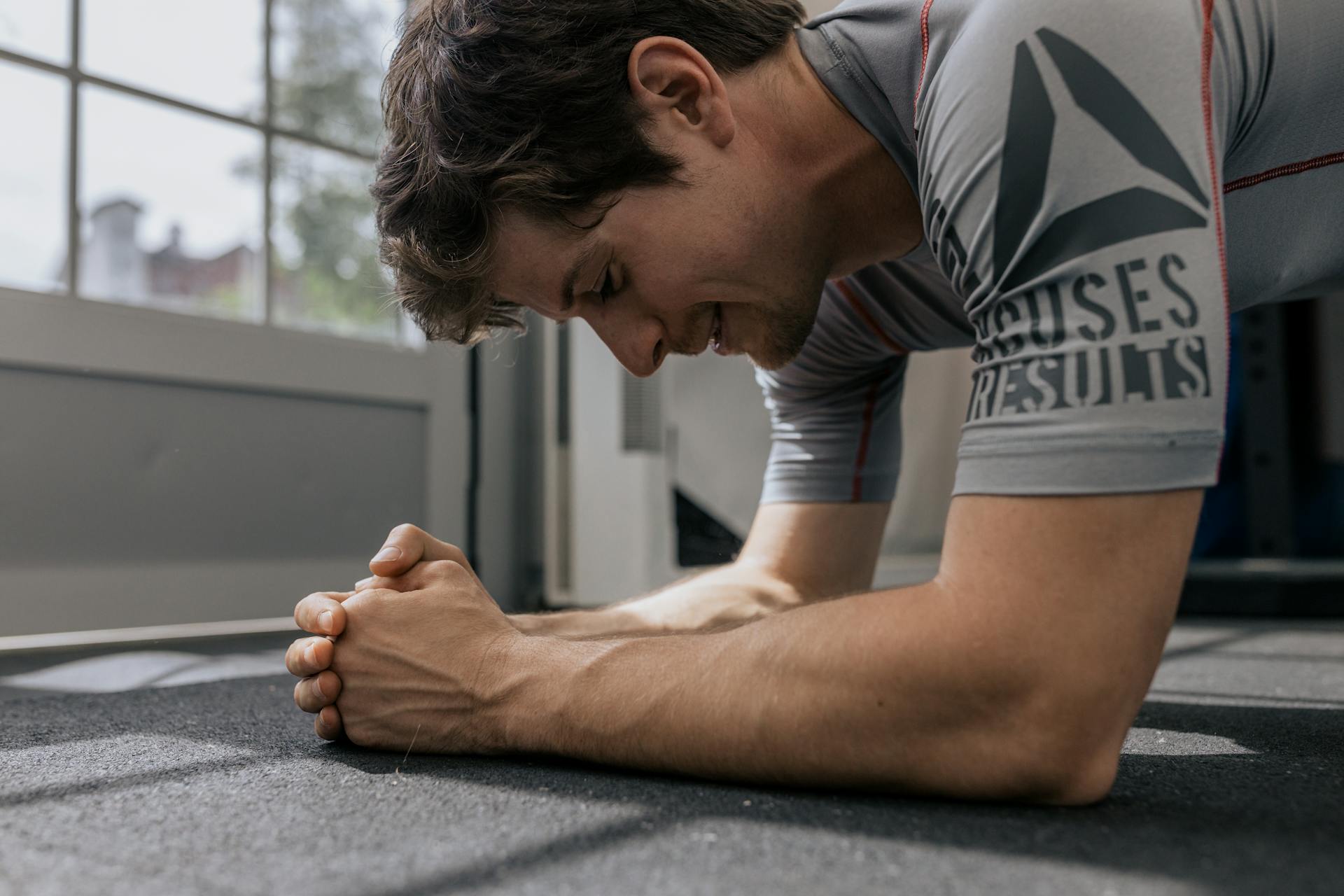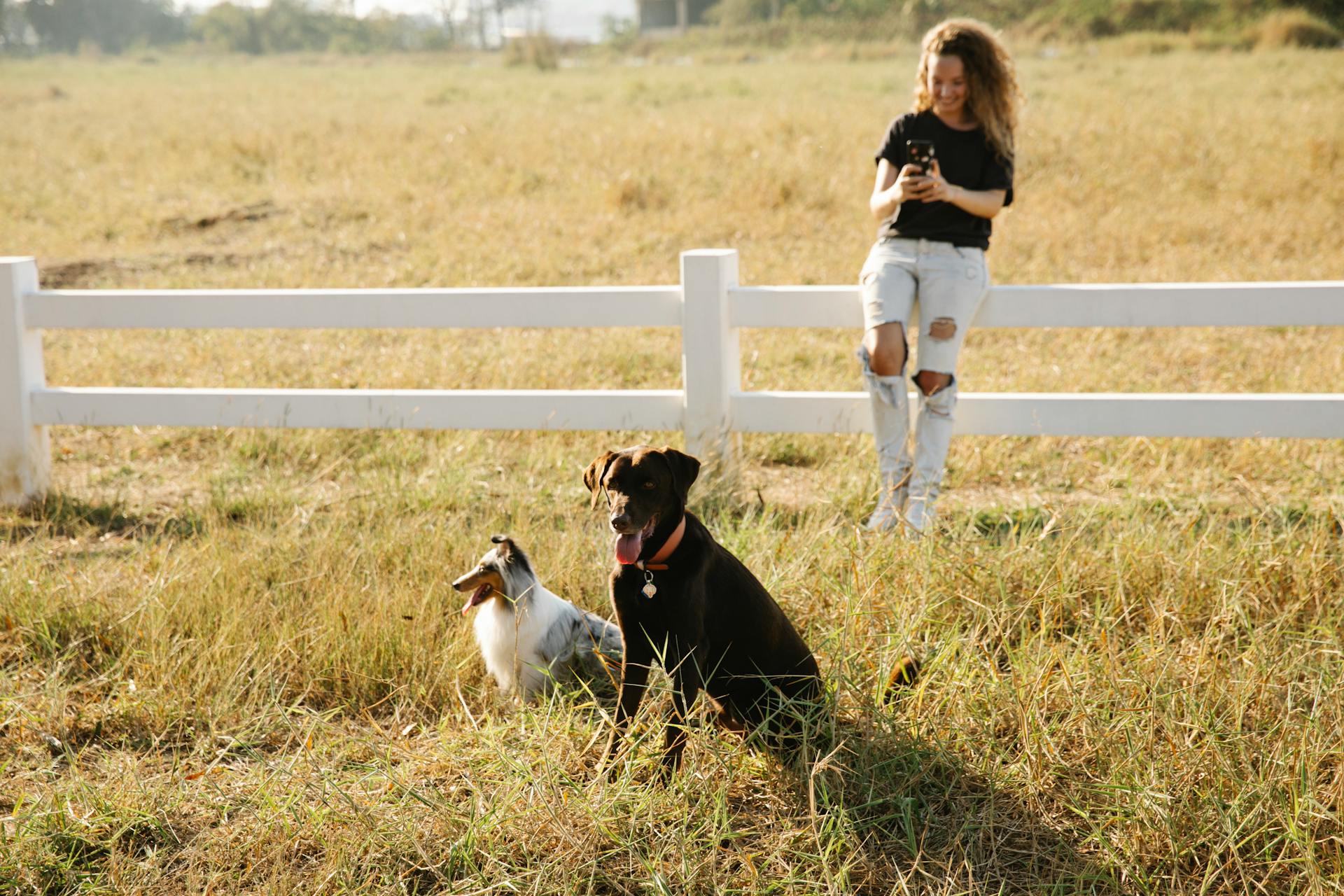
Bird dog training is a rewarding experience that requires patience, consistency, and positive reinforcement.
A well-trained bird dog can be a valuable asset for hunters and non-hunters alike, providing companionship and exercise.
The goal of bird dog training is to teach your dog to locate, point, and retrieve game birds.
A typical bird dog training program starts with basic obedience and socialization, followed by specialized training in scent work and hunting skills.
With the right training and equipment, you can turn your dog into a skilled bird dog that will bring joy and excitement to your hunting adventures.
Hunt tests are a great way to evaluate your dog's skills and provide a fun and challenging experience for both you and your dog.
Choosing a Training Method
Choosing a Training Method can be a daunting task, especially for beginners. The Smith training method is one of the most beginner-friendly methods available, with a comprehensive set of resources for introducing key concepts and engaging in active, hands-on learning.
The Smith method offers a stair-step approach, allowing handlers and dogs to reinforce and shore up leadership while digesting new tasks. This approach provides a safe and supportive environment for both parties to learn and grow.
Some notable resources for the Smith method include the Huntsmith DVDs, which can be extended through Rick's and Ronnie's foundation, intermediate, and advanced seminars. Additionally, Ronnie Smith, Susanna Love, and Reid Bryant have partnered to produce a comprehensive history and guide to the Smith System.
Here are some popular training methods to consider:
- Perfection Kennels
- Standing Stone Kennels
- The Smith Method
- Steady with Style / Mo Lindley method
- Force Free Gundog Clicker Retrieve
Remember, there's no one-size-fits-all approach to training your bird dog. Take the time to research different methods and find what works best for you and your dog.
Is the Smith Method Good for Beginners?
The Smith Method is a great choice for beginners, as it offers a stair-step approach that allows handlers and dogs to reinforce and shore up leadership and digest new tasks at their own pace.
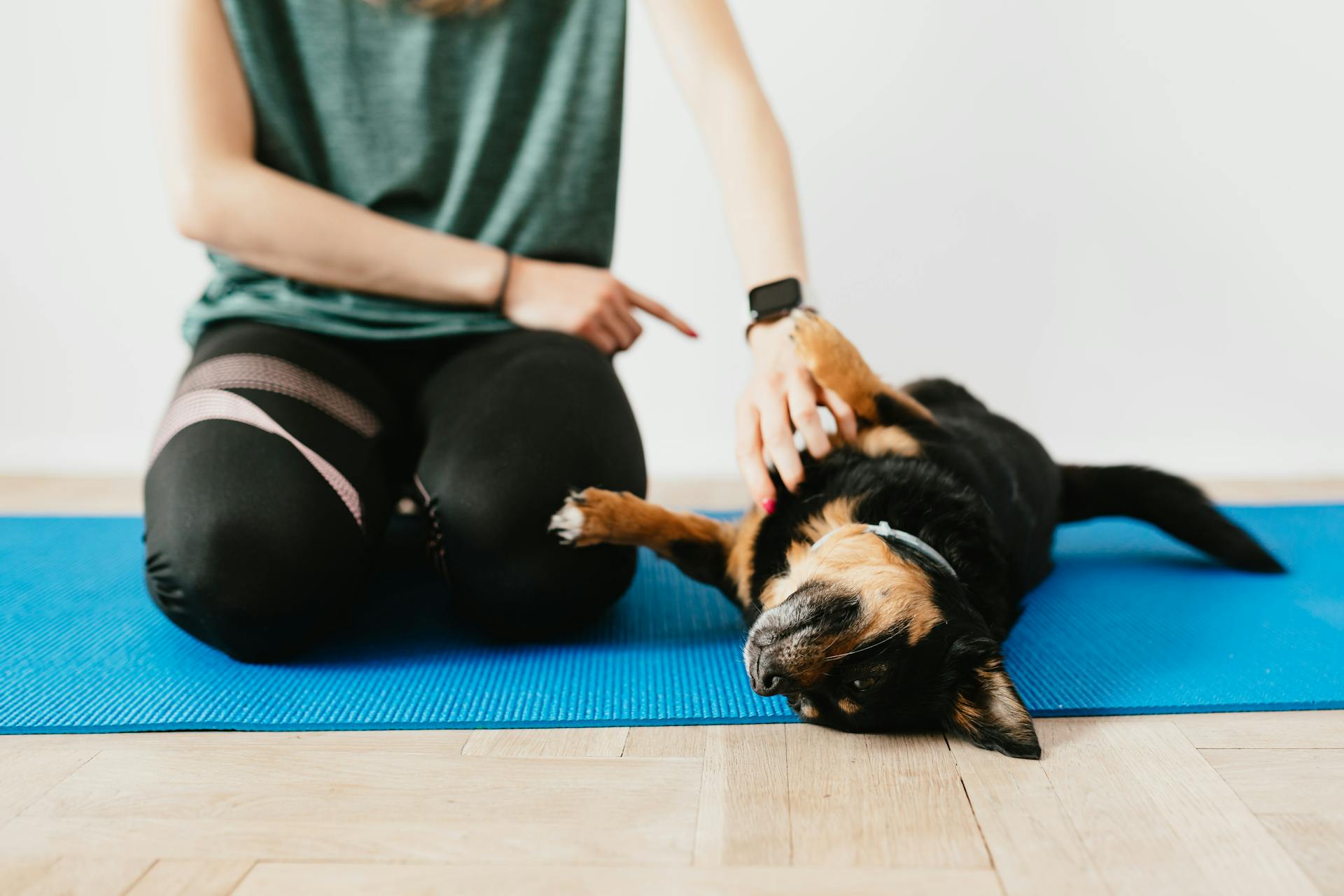
This method is designed to provide a safe and supportive environment for beginners, with a comprehensive set of resources available to introduce key concepts and facilitate hands-on learning.
The Smith Method is one of the most beginner-friendly methods available, with over a hundred handlers and dogs having successfully employed it.
Beginners can start with the Huntsmith DVDs, which introduce lessons that can be extended through additional resources such as Rick's and Ronnie's seminars.
These seminars offer a range of levels, from foundation to advanced, providing a clear progression for handlers and their dogs to follow.
The Smith Method also offers a history and guide, "Training Bird Dogs with Ronnie Smith Kennels: Proven Techniques and an Upland Tradition", which provides a comprehensive overview of the system.
For those looking for a more personal perspective, I can attest that the Smith Method has been a valuable resource for me as a beginner, helping me to understand the concepts and apply them to my own training.
In addition, the method is backed by a range of experienced trainers and educators, including Ronnie Smith, Susanna Love, and Reid Bryant.
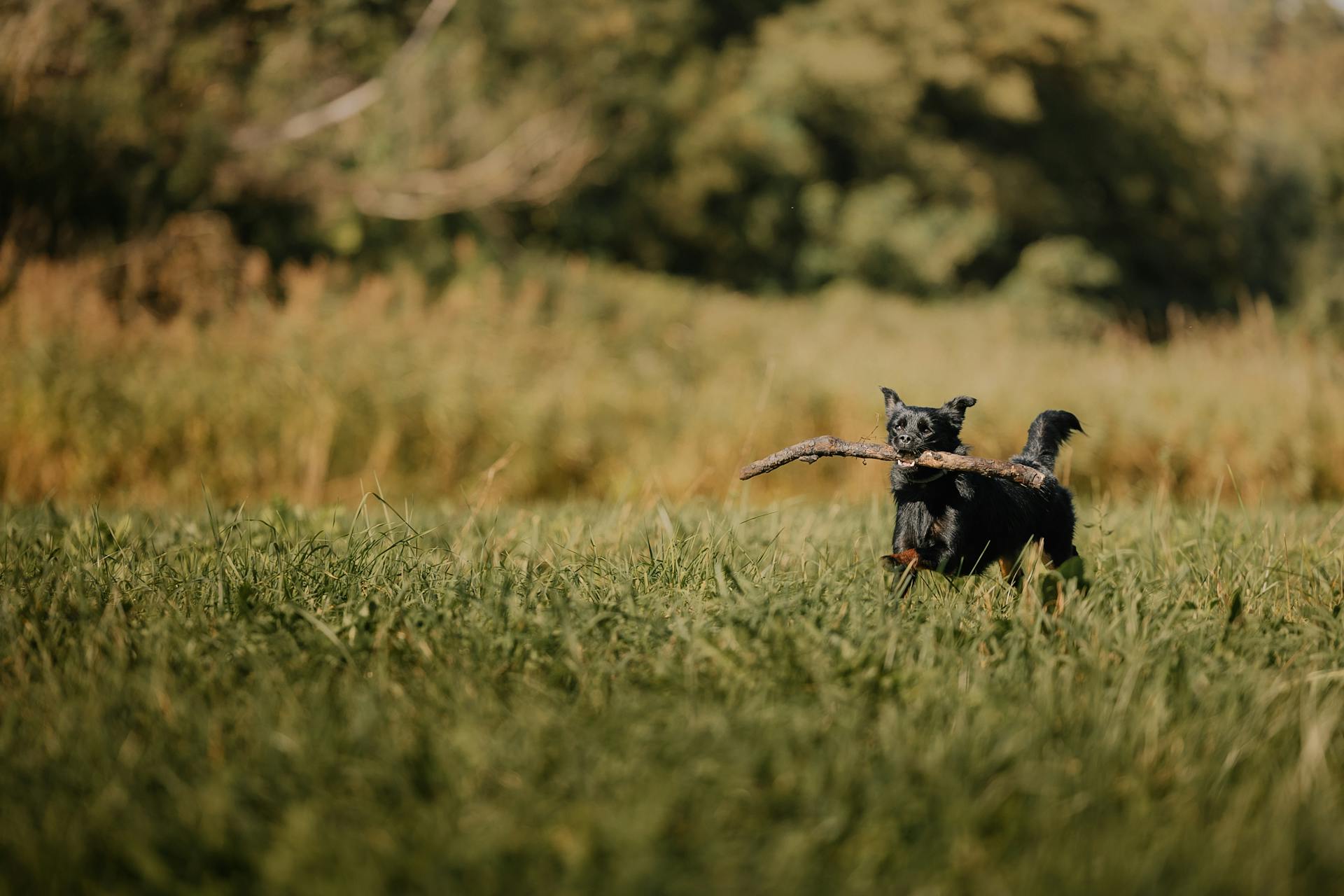
For those with new bird dog puppies, the Smith Method provides a clear outline of critical puppy development and initial bird and gun exposure tasks, which prime the pup for later progress in the system.
These resources offer a rich set of material for handlers to internalize the method conceptually, even before attempting to implement its formal training components later with a young dog.
Choose a Method
Choosing a training method for your bird dog can be a bit overwhelming, especially with all the different approaches out there. Researching various methods and finding what works best for you is essential.
You may want to consider using a traditional "force fetch" method, which involves an ear pinch and later an e-collar overlay, if you're looking to teach your dog to retrieve. This method can be effective, but it may not be the most comfortable option for everyone.
There are also alternative methods, like the "toe-hitch", which frees up your hands and can be a good choice if you need to work with your dog in a more flexible way. The "toe-hitch" method can be a good option if you're looking for a more hands-free approach.
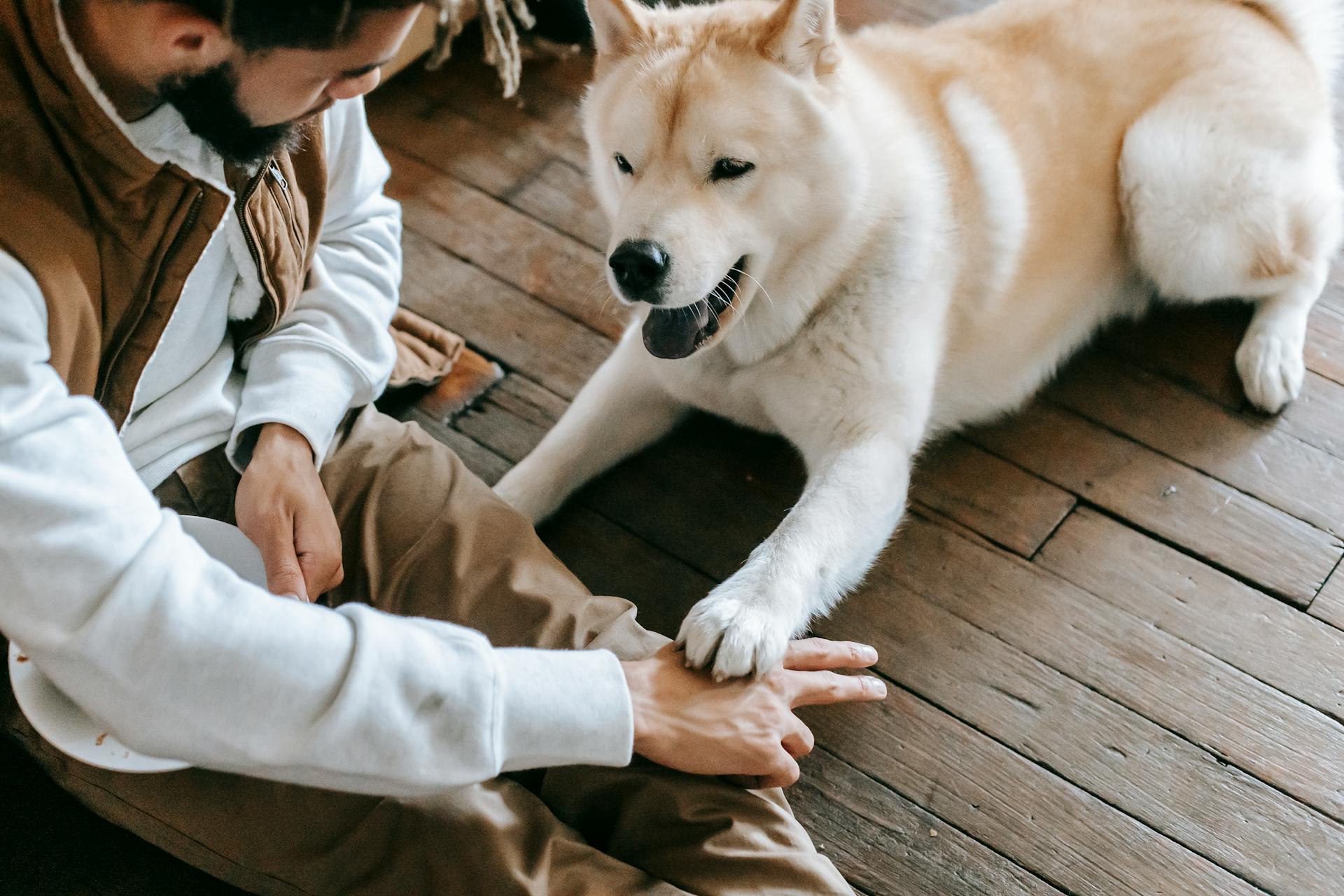
Building a foundation in retrieving using a clicker and food rewards is another approach you may want to consider. This method is often referred to as the "Force Free Gundog Clicker Retrieve" method.
Here are some resources you may find helpful in choosing a training method:
- Perfection Kennels
- Standing Stone Kennels
- The Smith Method
- Steady with Style / Mo Lindley method
- Force Free Gundog Clicker Retrieve
Preparation and Planning
Setting a clear goal for your bird dog training is essential. Having a general idea of where you'd like to head will provide good guidance as you move forward.
You may want to aim for earning your dog's Junior Hunter title, which requires properly acclimating your dog to gunfire, making sure your dog points birds, and having a basic level of obedience and listening skills. Alternatively, you might be preparing your dog for the NAVHDA Utility Test, which requires additional skills like retrieving and water sequences.
Make a training schedule that fits with your work and family commitments. This will help you build a stronger bond and relationship with your dog, and develop a different level of self-confidence as you see your progress.
Set a Goal
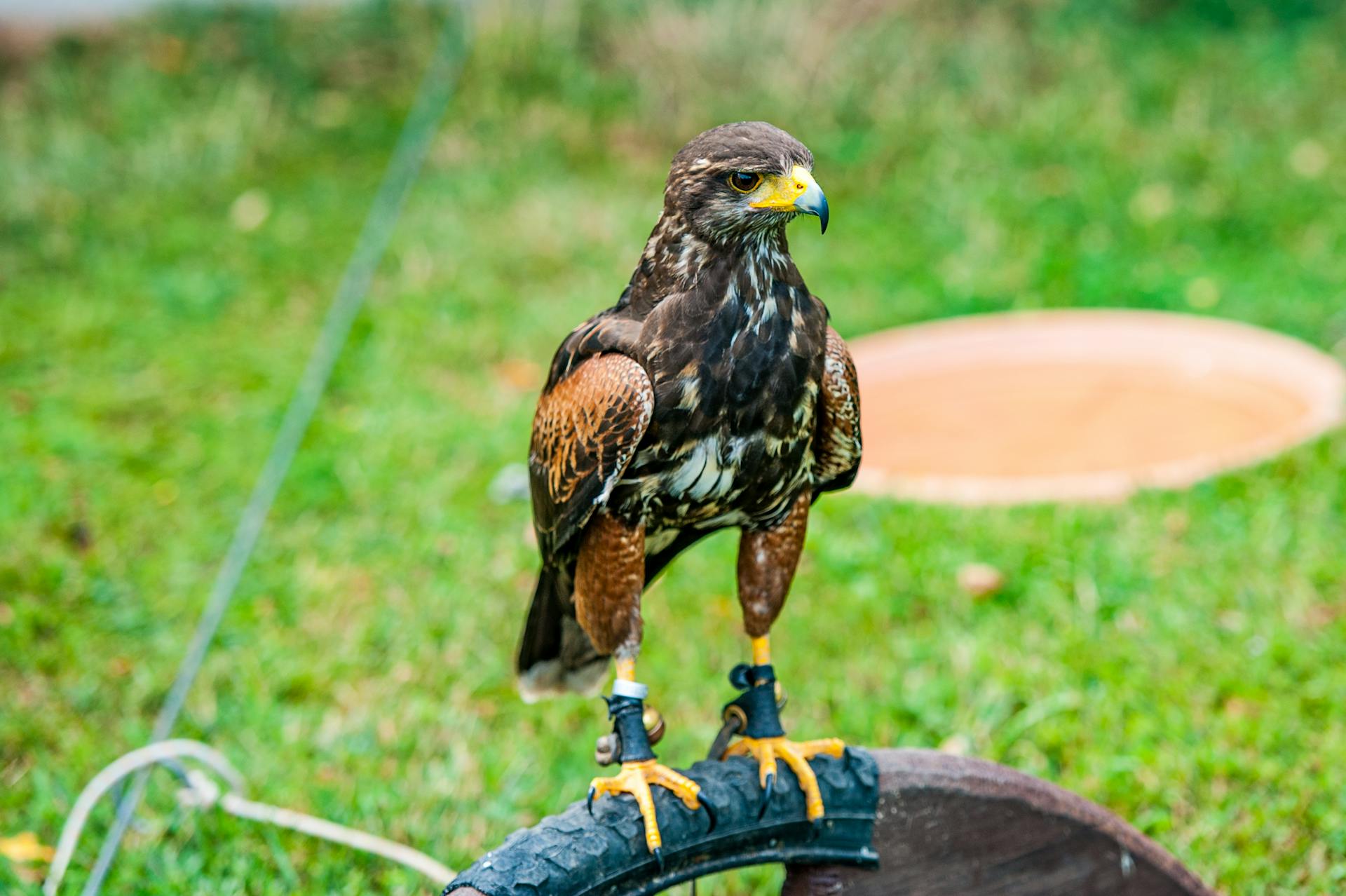
Setting a goal for your dog's hunting abilities can help guide you in your training efforts. Having a clear idea of what you want to achieve will make it easier to stay motivated and focused.
Consider what type of hunting events you'd like to participate in, such as AKC hunt tests or NAVHDA Utility Tests. These events provide clear criteria to work toward, making it easier to set specific goals.
For example, aiming to earn your dog's Junior Hunter title requires working on proper gunfire acclimation, bird pointing, and basic obedience. You'll need to make sure your dog listens to you when running in the field.
Maybe your goal is to prepare your dog for the NAVHDA Utility Test, which involves water sequences and retrieving in addition to basic hunting skills.
It's essential to be realistic about the time and effort required for bird dog training. Depending on the level you want to reach, training can take a fair amount of time and may require frequent sessions.
Socialization with Birds
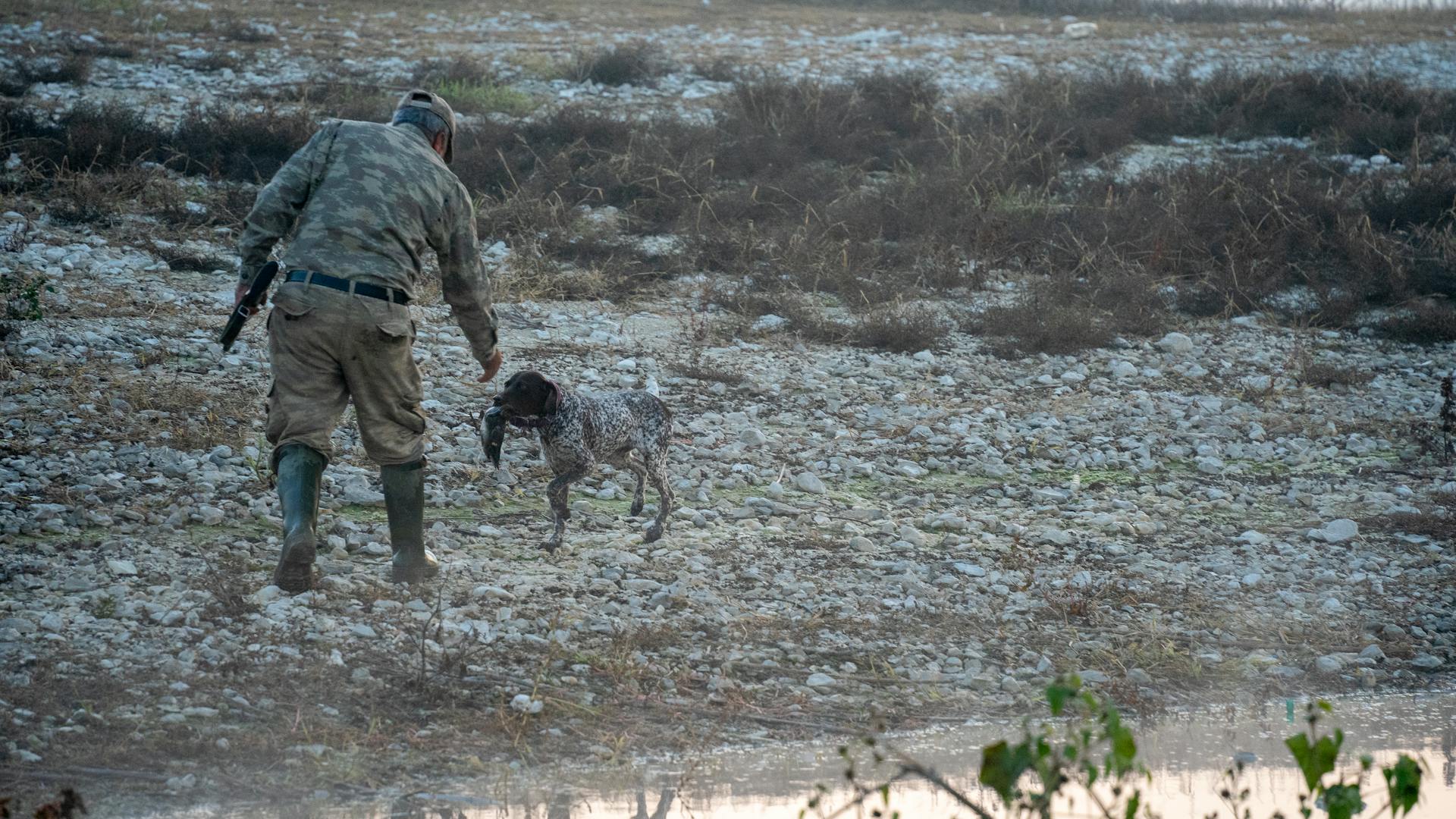
Birds are highly social creatures and require interaction to stay happy and healthy. They need to be socialized from an early age to become confident and friendly birds.
Birds can suffer from loneliness and stress if left alone for too long, which can lead to behavioral problems. In fact, studies have shown that birds that are socialized properly are less likely to develop behavioral problems.
To socialize your bird, start by letting it get used to your presence and voice. Begin by talking to your bird regularly and letting it see and hear you.
Socializing a Dog
Socializing a dog is crucial for their development and future behavior. It's essential to start socializing your dog as early as possible, ideally from 8-11 weeks old.
Puppies learn quickly and are most receptive to new experiences during this period. This is why it's recommended to expose your puppy to various environments, people, and other animals during this time.
A well-socialized dog is less likely to develop behavioral problems, such as fear or aggression, later in life. According to research, 85% of behavioral problems in dogs are caused by a lack of socialization.
Socialization should be a gradual process, introducing your dog to new stimuli at a comfortable pace. Start with simple interactions, such as feeding your dog in different locations or having visitors come to your home.
Housebreaking a Puppy
Housebreaking a puppy requires patience and consistency. Jason Carter, a NAVHDA judge and trainer, suggests that it's essential to establish a routine from an early age. He recommends creating a schedule for feeding, exercise, and potty breaks to help the puppy learn quickly.
You'll want to supervise your puppy closely, especially during the first few months, to catch any signs that they need to go outside. Jason has had experience with Deutsch Kurzhaars and knows that consistency is key. He recommends taking your puppy out to the same spot each time to create a connection between the location and the action.
It's essential to reward good behavior, such as eliminating outside, with praise and treats. Jason's experience with training puppies has shown that positive reinforcement is a powerful tool. By associating good behavior with rewards, you can help your puppy learn quickly and develop good habits.
Find a Trainer or Training Location
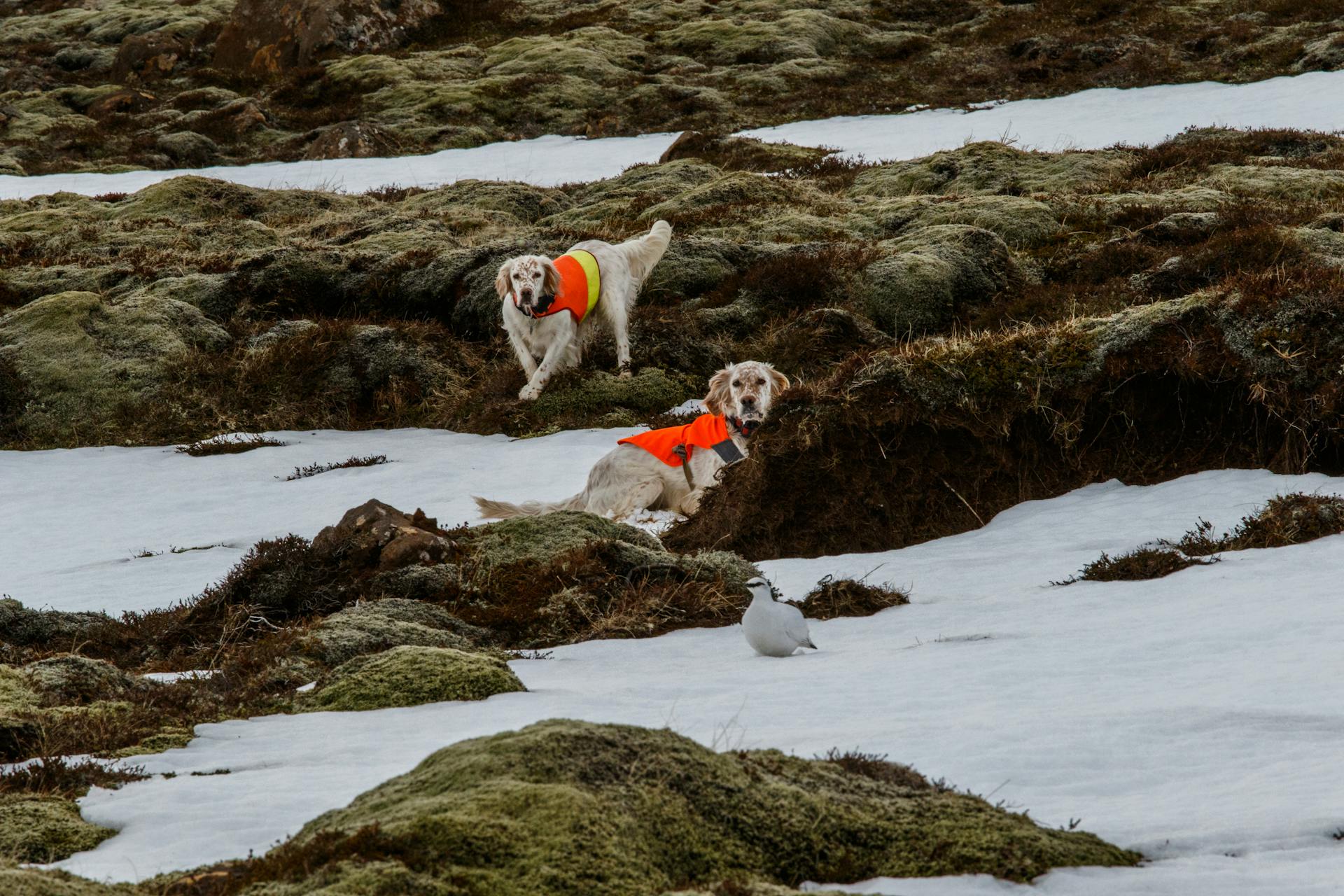
Finding a trainer or training location is a crucial step in preparing your bird dog for success. You'll want to send your dog to a trainer if you can't commit to regular training sessions yourself.
Alternatively, you can do a lot of work in your backyard or at local parks/gamelands, but you'll still need to train your dog with live birds somewhat frequently.
If you do decide to train yourself, check out my post on How to Find a Place to Train Your Bird Dog for some good options to consider. I've found that having access to a place with a pigeon coop can be a game-changer.
Sending your dog to a trainer can be a big decision, so make sure you find someone that you get along with and you like their style.
Training Techniques
The Smith training approach is a comprehensive system that focuses on manners, obedience, and yard work. This foundation is built from the moment a bird dog puppy is picked up at eight weeks through puppy development and into field work with birds.
The Smith system's emphasis on yard work and rigorous manners is ideal for urban environments where space is limited. This approach allows handlers to establish a strong leadership position with their dogs outside of the bird field.
Correcting every mistake, no matter how minor, is key to training a bird dog. Scott Miller's approach involves calmly picking up a dog that moves a single step when quail flush or the gun goes off and moving it back to its original position.
DIY with the Smith Method
The Smith Method is an excellent choice for beginners, offering a stair-step approach that allows handlers and dogs to reinforce and build on previously mastered steps. This method is designed to provide a safe and supportive learning environment.
The Smith system is one of the most fully-developed systems for beginners, with a comprehensive set of resources available for introducing key concepts and engaging in active, hands-on learning. This includes the Huntsmith DVDs, which provide a solid foundation for beginners.
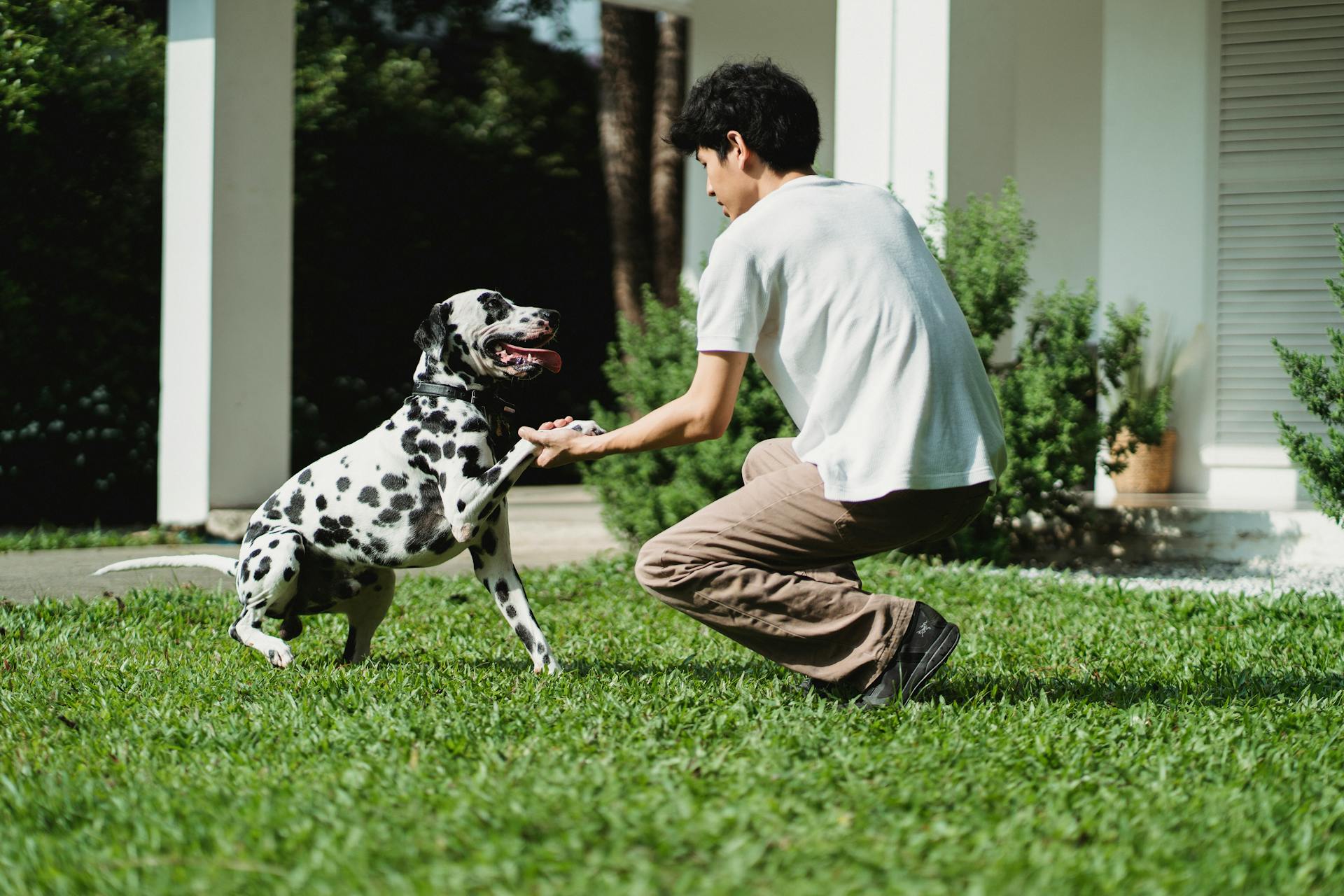
Beginners can start with the Huntsmith DVDs and extend their learning through Rick's and Ronnie's foundation, intermediate, and advanced seminars. The Smith method also offers weekly dog training classes, allowing for continued hands-on work with beginners and their dogs.
For those with new bird dog puppies, the Smith system outlines critical puppy development and initial bird and gun exposure tasks, priming the pup for later progress in the system. This is especially helpful for those waiting until their puppy is a bit older to begin formal steadiness training.
The Smith system's foundational focus on yard work and rigorous manners is what sets it apart from other training philosophies. This emphasis on yard work and obedience tasks allows handlers to establish a strong leadership position with their dogs outside of the bird field.
The intensive yard work and obedience tasks also help prevent detrimental associations between aversive stimuli and birds, giving rise to bird aversion, blinking, and other problematic behaviors. By establishing initial associations in the yard, handlers can avoid these issues in the bird field.
Six Expert Tips
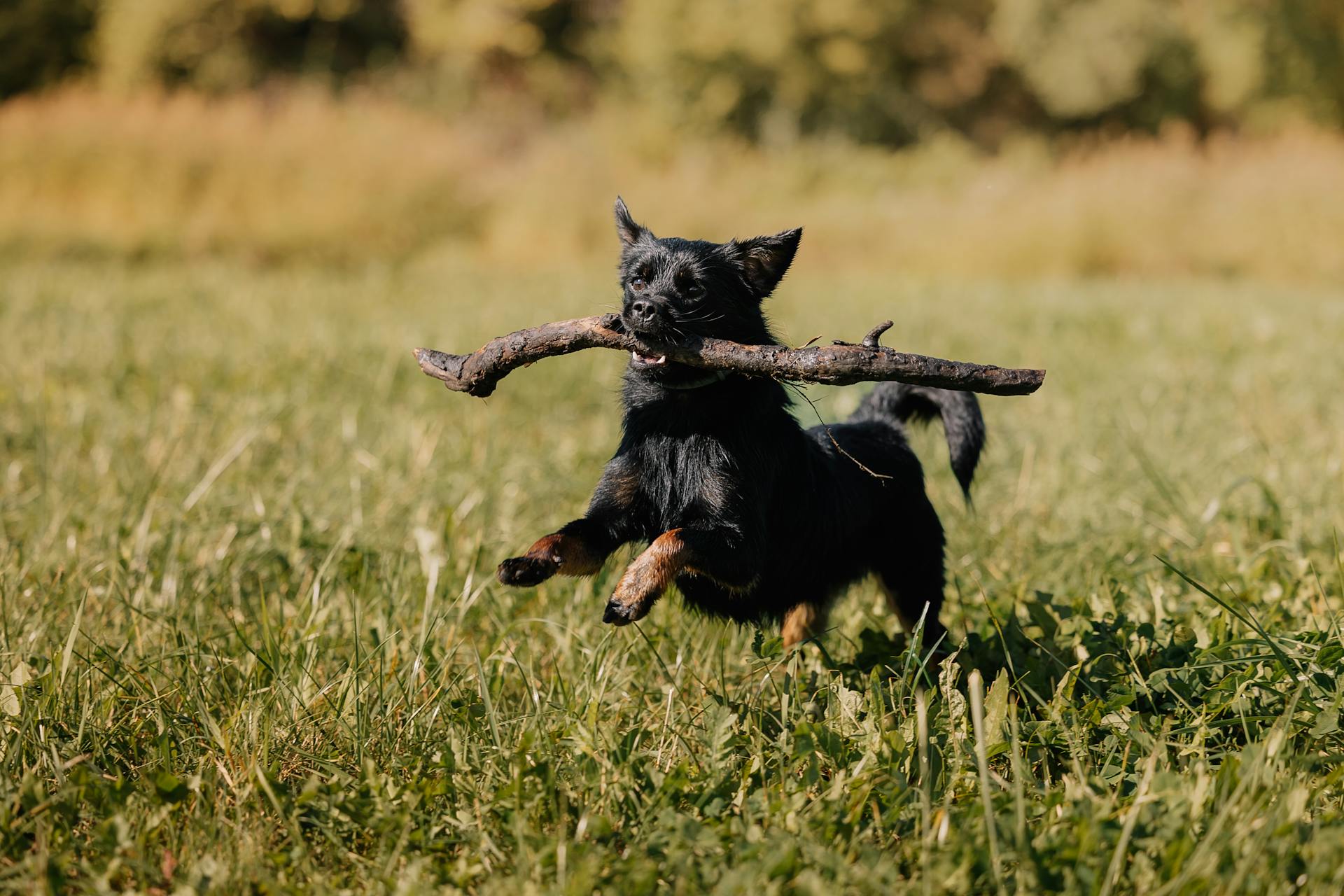
Correct every mistake, no matter how minor. If a dog moves a single step when quail flush or the gun goes off, immediately correct it.
Training your bird dog requires consistency and patience. Correct every mistake, no matter how small, to ensure your dog learns good habits.
Getting your hands on your dog after every point is crucial for training steadiness. This is one of Scott Miller's secrets for training steady pointing dogs.
Training all year long is essential for a successful hunting season. Miller credits his farm-boy work ethic for much of his success, and he continues to train in the predawn dark, even in the summer heat.
Giving your dog an occasional bird can be the key to having them stand there and look active and engaged after the flush. Miller lets his pointers get a bird in their mouths every now and then, reminding them what this is all about.
Frequently Asked Questions
What is the easiest dog to train for bird hunting?
For bird hunting, Golden Retrievers and Labradors are often considered the easiest breeds to train, known for their intelligence and eagerness to please.
What age to start training a bird dog?
Training a bird dog typically begins at a younger age than a traditional dog, around 8-12 weeks old, when they're most receptive to learning
Sources
- https://projectupland.com/hunting-dogs/the-smith-method-of-bird-dog-training-with-rick-smith/
- https://gardenandgun.com/articles/expert-tip-training-bird-dog/
- https://accidentalbirddog.com/how-to-start-training-for-hunt-tests-field-trials-with-your-bird-dog/
- https://smithkennels.com/training
- https://projectupland.com/hunting-dogs/where-to-start-in-training-with-a-bird-dog-puppy-2/
Featured Images: pexels.com
